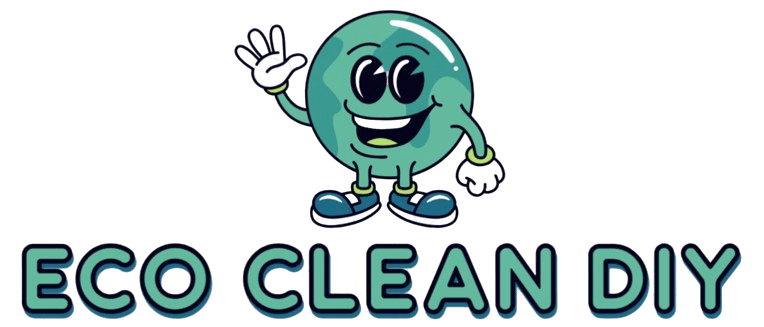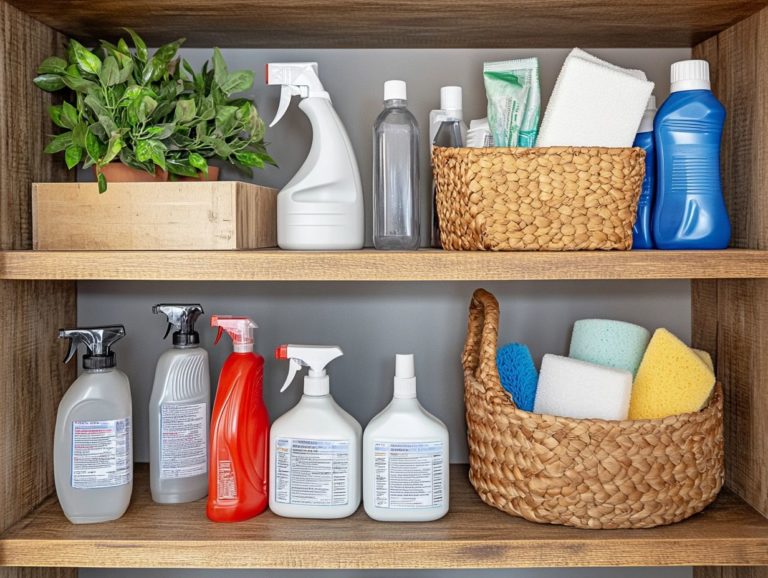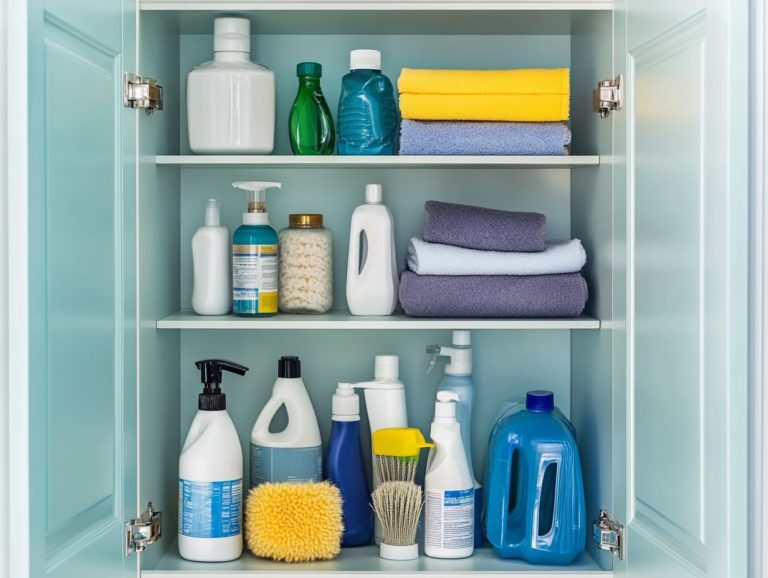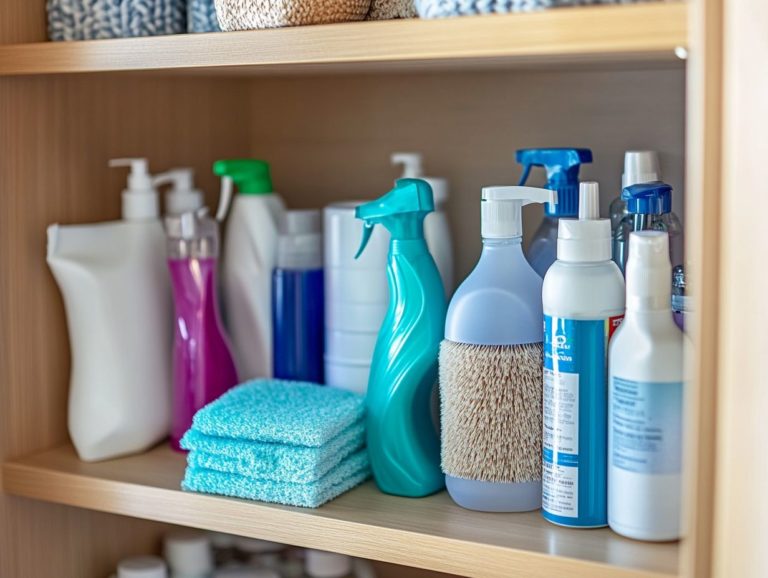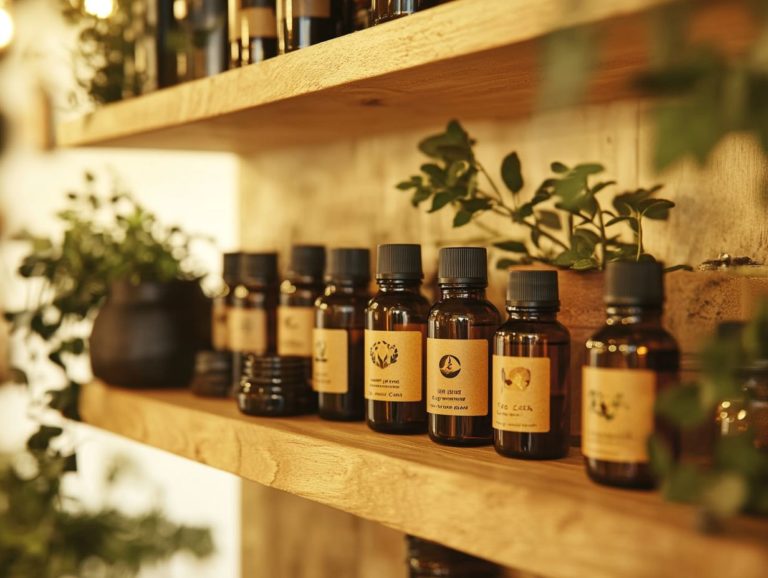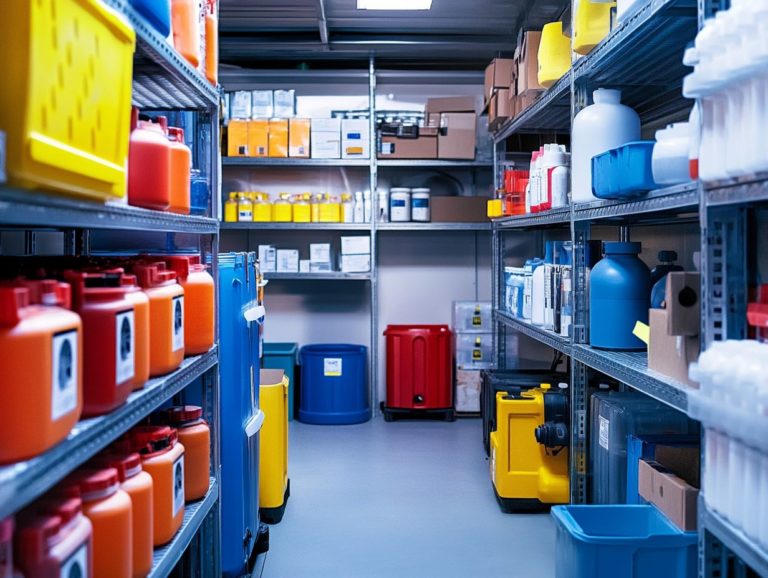How to Keep Your Cleaning Supplies Safe and Accessible
Keeping your cleaning supplies, such as tools and products, safe and easily accessible is essential for maintaining a healthy, neat, and tidy home environment.
This article delves into the potential risks associated with unsafe cleaning items, highlighting the dangers of chemical exposure, ingestion, and improper mixing. You will also discover best practices for storing and organizing these supplies to ensure they are secure and convenient for you to reach, especially for cleaning personnel.
Additionally, you ll learn about alternatives to traditional cleaners and how to use and dispose of cleaning products responsibly. Incorporating cleaning methods and organizing tips can make your home safer and more efficient. Start now! Keeping your home safe begins with smart cleaning practices that protect your loved ones!
Contents
- Key Takeaways:
- Why is it Important to Keep Cleaning Supplies Safe and Accessible?
- What are the Risks of Unsafe Cleaning Supplies?
- How to Store Cleaning Supplies Safely
- How to Keep Cleaning Supplies Accessible
- What are the Best Practices for Using Cleaning Supplies?
- Frequently Asked Questions
- 1. How can I keep my cleaning supplies safe and accessible at the same time?
- 2. What are some essential safety measures to follow when storing cleaning supplies?
- 3. How often should I check and replace my cleaning supplies?
- 4. What are some safe alternatives to harsh chemicals for cleaning?
- 5. How can I make my cleaning supplies more accessible for people with disabilities?
- 6. What should I do with old or unused cleaning supplies?
Key Takeaways:
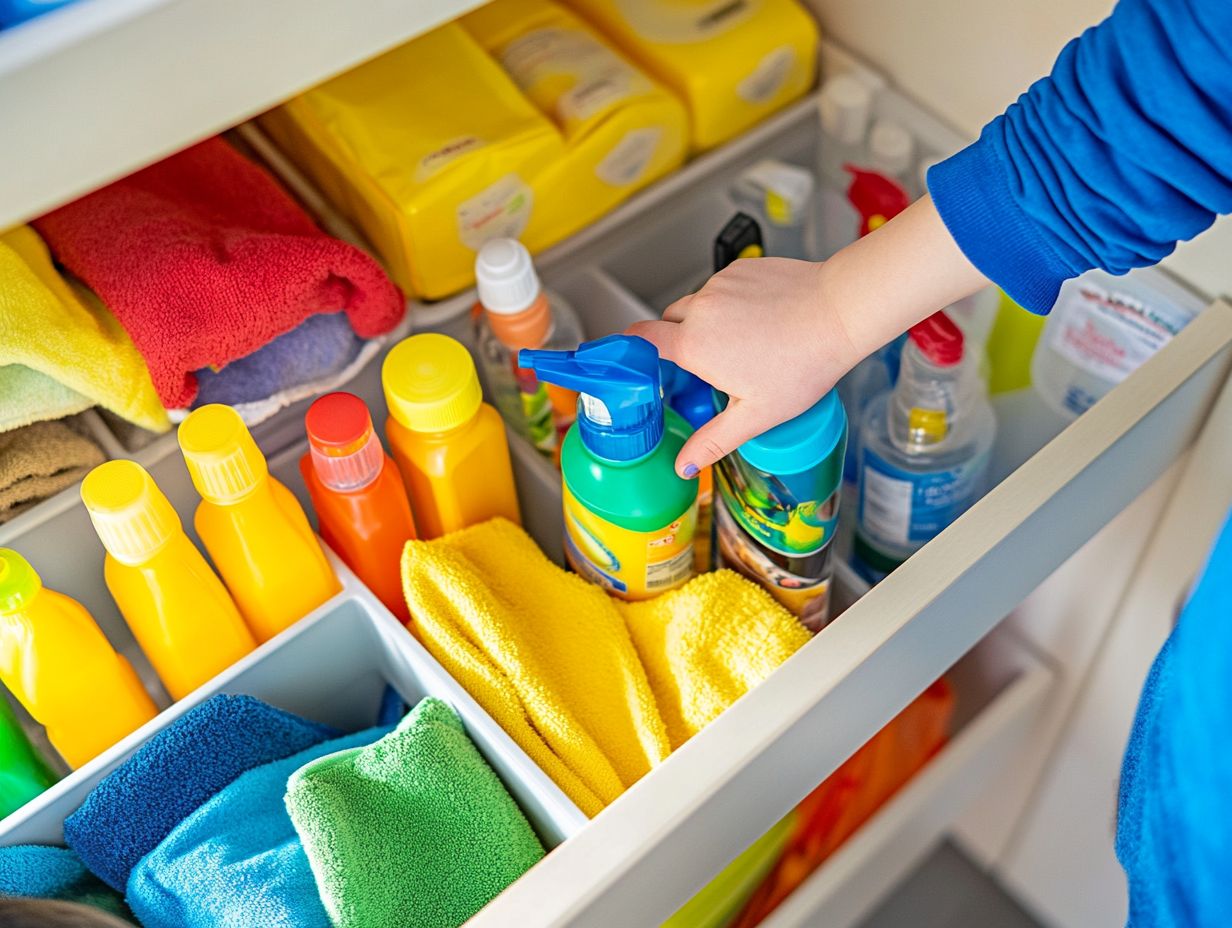
- Store cleaning supplies in labeled bins to protect yourself and others from harmful chemicals.
- Keep chemicals away from children and pets to prevent accidental exposure.
- Use clear containers for easy identification of cleaning items to maintain safety and accessibility.
Why is it Important to Keep Cleaning Supplies Safe and Accessible?
Ensuring that your cleaning supplies are both safe and easily accessible is essential for keeping your home neat and tidy while also preventing potential accidents, particularly in households with children and pets.
This requires a thoughtful approach to managing your cleaning products and tools, which may range from various cleaning chemicals to surface cleaners. When stored correctly, these items can significantly reduce the risks associated with toxic reactions.
By establishing effective ways to keep your supplies in order, you can enhance your home s organization. This makes daily-use products readily accessible and ensures adherence to safety regulations set forth by OSHA, a safety organization that sets guidelines to keep workplaces safe. Utilize storage ideas like vertical space and efficient cabinet space to optimize your setup.
What are the Risks of Unsafe Cleaning Supplies?
Unsafe cleaning supplies can present considerable risks, raising safety concerns for both adults and children, as well as pets within the home. These dangers often arise from the improper storage of hazardous chemicals and cleaning products, which can lead to toxic reactions, accidental ingestion, or exposure to harmful fumes especially in poorly ventilated areas like cleaning stations.
This is why it’s also important to use child-proof locks and secure storage solutions for your cleaning supplies. Consider storage solutions like a utility cart, nylon baskets, and supplies on wheels to prevent accidents and ensure safety becomes an integral part of your cleaning routine.
What are the Dangers of Chemical Exposure?
Chemical exposure from cleaning supplies can lead to a myriad of health issues, including respiratory problems, skin irritations, and long-term health risks, particularly when you overlook safety equipment and proper ventilation. Common cleaning agents think harsh cleaners and multi-purpose solutions can emit harmful fumes, underscoring the importance of using these products safely and effectively.
Ensuring that your cleaning processes take place in well-ventilated areas is essential to mitigating these dangers and establishing a safer cleaning routine. Many individuals may not realize that products containing bleach or ammonia can irritate the eyes and lungs and even worsen asthma symptoms.
Over time, repeated exposure to these chemicals can lead to chronic conditions or more severe health concerns. Therefore, equipping yourself with protective gear like gloves and masks, along with ensuring that windows are open and air purifiers are in use, can significantly reduce these risks.
By taking such precautions, you can safeguard yourself and others from the harmful effects of everyday cleaning products, ultimately fostering a healthier living environment. Be sure to perform routine checks on your cleaning supplies to ensure they are still safe to use.
Have you ever thought about what could happen if cleaning supplies are not stored safely? Take a moment today to review your cleaning supplies and make your home safer!
How to Store Cleaning Supplies Safely
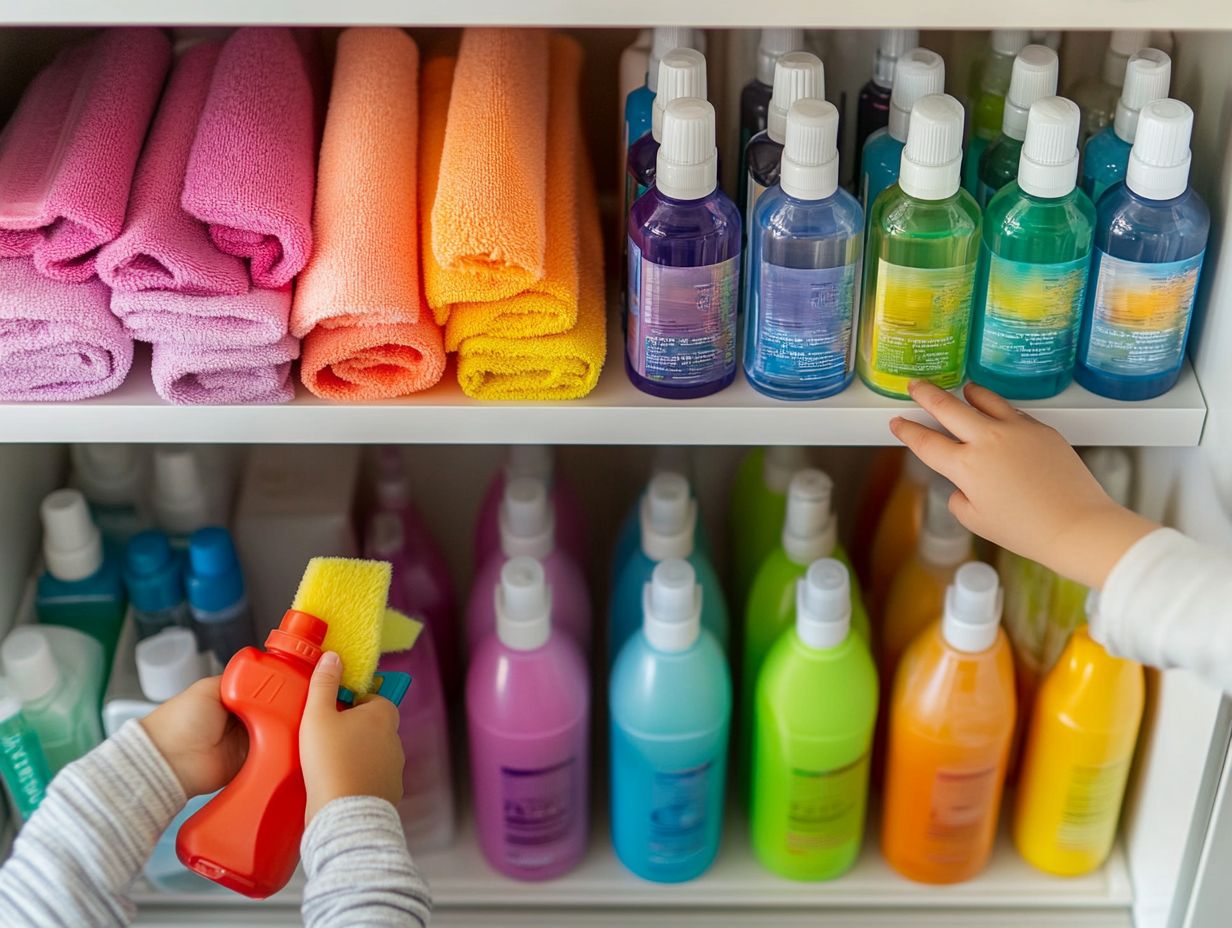
Storing your cleaning supplies safely is crucial for preventing accidents. Keeping hazardous materials out of reach of children and pets is essential.
Consider incorporating effective storage solutions, such as labeled bins, clear containers, and a cleaning caddy. These options help maintain organization while ensuring easy accessibility to your cleaning products.
This not only minimizes safety risks but also creates a more efficient space.
You might also think about setting up dedicated cleaning stations equipped with secure storage options. These could include child-proof locks, lazy Susans, and removable tension rods to elevate the safety measures within your home organization system.
What are the Risks of Ingesting Cleaning Supplies?
Ingesting cleaning supplies can lead to severe health risks. It’s crucial to act quickly to keep your loved ones safe.
Many cleaning products contain harmful chemicals that can trigger dangerous reactions. Implementing strict safety measures is essential like using child-proof locks, secure storage, and keeping hazardous materials out of reach.
Understanding the risks associated with ingestion is vital for maintaining a safe environment, especially in homes with vulnerable individuals. Utilize high cabinets and storage space to store these high-risk items safely.
Household cleaning agents like bleach, ammonia, and certain drain cleaners are particularly harmful if swallowed. Accidental ingestion can result in symptoms such as nausea, vomiting, and even respiratory distress.
It is crucial to keep these cleaning solutions out of reach to ensure child safety.
Act now! Store all cleaning supplies safely to keep your family protected!
Clearly labeling all products and disposing of any unused or expired items further enhances your household’s safety. By adopting these precautionary steps, you can minimize the risk of accidental poisonings and create a secure living environment for everyone.
What are the Hazards of Mixing Cleaning Products?
Mixing cleaning products can result in hazardous chemical reactions that generate toxic fumes or harmful substances, placing your health and safety at serious risk.
Many common cleaning supplies, when combined, can lead to dangerous situations, such as the release of chlorine gas from mixing bleach with ammonia. This highlights the necessity of understanding product labels and adhering to safety guidelines.
Always employ proper ventilation and safety equipment when handling these materials. With proper knowledge and the appropriate safety equipment, you can significantly mitigate these hazards, ensuring a safer cleaning environment.
For example, when vinegar meets hydrogen peroxide, they form a chemical that can irritate your skin and lungs. This serves as a reminder of how crucial it is to follow manufacturer instructions and utilize proper cleaning methods.
When using any cleaning agent, it s vital to don the right personal protective equipment, such as gloves and masks, to minimize your exposure to potentially harmful reactions.
Ensuring proper ventilation can further reduce risks by dispersing toxic fumes, making your cleaning process both safer and more effective.
Being aware of these dangers and taking precautionary measures is essential for anyone who wants to maintain cleanliness while keeping safety at the forefront in their living or working spaces.
Always follow workplace safety guidelines and ensure that cleaning personnel are well-informed.
What are the Best Storage Containers for Cleaning Supplies?
Choosing the right storage containers for your cleaning supplies is essential for maintaining both organization and safety in your home. Opt for durable storage options like clear containers and small bins. These choices allow you to easily track your supplies while enhancing the aesthetic appeal of your cleaning areas.
Consider cleaning stations and using elastic bands to hold items together to optimize your storage space. By utilizing these containers, you can prevent clutter and ensure that your cleaning products are stored securely and neatly. This minimizes the risk of accidents and elevates your home organization.
When you choose transparent containers, you can quickly identify the contents without having to rummage through multiple items. This saves you valuable time during your cleaning routines. Small bins provide the flexibility to categorize your items, making it straightforward to group similar products together and access them with ease.
Using organizing tips like hanging organizers can greatly improve accessibility and efficiency. This strategy promotes efficiency and contributes to a safer environment by ensuring hazardous materials are out of reach and stored appropriately.
Ultimately, investing in quality storage solutions reflects your commitment to effective home management and a stress-free living experience. Spaces like your kitchen, bathroom, and laundry areas will greatly benefit from these improvements.
How to Label Cleaning Supplies for Safety?
Labeling your cleaning supplies is a game-changer for safety and organization! By clearly identifying each product with appropriate labels, you can effortlessly track the contents of your cleaning caddy. This ensures that potentially hazardous materials are handled with the utmost care.
Consider using color-coded labels for different cleaning areas and surfaces. Implementing a clear labeling system prevents mix-ups and keeps your space free from clutter. For example, using color-coded labels can simplify the selection of the right product for specific surfaces while adding a touch of visual appeal to your storage area.
Utilize waterproof labels for items stored in damp environments, or use permanent markers to note expiry dates on cleaning solutions. This helps you avoid the mishap of using stale chemicals. Simple practices, such as categorizing your labels by function like disinfectants, glass cleaners, and degreasers enhance both safety and workflow.
Using a lazy Susan can also help organize your supplies more effectively, transforming cleaning tasks into a more efficient and less daunting experience.
Where to Store Cleaning Supplies?
The best spots for storing your cleaning supplies offer both easy access and a commitment to safety and organization. Think about utilizing cabinet spaces in your kitchen and bathroom. These areas allow you to keep essential cleaning supplies close at hand while keeping them out of reach from curious children and pets.
Establishing designated cleaning stations in your utility room or garage provides ample room for larger cleaning tools and equipment. This helps you maintain a clutter-free environment. Consider using storage ideas like a rotating lazy Susan for smaller items.
Under-sink cabinets can be particularly effective hidden storage options for your cleaning agents, especially when equipped with childproof locks to enhance safety. When designing your cleaning station, incorporate shelving units or bins that categorize supplies by type. You can group them as follows:
- General cleaners
- Disinfectants
- Tools like brooms and mops
By utilizing clear containers or labeled baskets in these areas, you not only streamline access but also foster a systematic approach to cleaning. This makes it easier for everyone in your home to quickly find what they need without delay.
Thoughtful organization in these storage spaces can significantly enhance your efficiency during cleaning routines. It ensures that hazardous materials and cleaning chemicals are securely stored. Don t wait to organize start today for a cleaner, safer home!
How to Keep Cleaning Supplies Accessible
Ensuring that your cleaning supplies are easily accessible is crucial for maintaining an efficient cleaning routine. You can quickly locate and use the products you need when the moment arises.
Using organizing strategies, such as a cleaning caddy, can significantly enhance accessibility. It allows you to transport your daily-use cleaning products effortlessly throughout your home. Supplies on wheels can also make transportation easier.
Implement smart storage solutions like designated shelves or wall-mounted options to optimize your space. This ensures that your cleaning tools are always within reach, fostering an effective and organized environment.
What are the Best Places to Keep Cleaning Supplies?
The best places to store your cleaning supplies strike a balance between safety, organization, and convenient access. Use cabinet spaces in your kitchen and bathroom, along with dedicated cleaning stations that create a central hub for all your cleaning tools and chemicals. Choose these areas wisely so frequently used items are easily accessible while remaining securely stored away from curious children and pets.
For example, use a locked cabinet for hazardous substances like bleach or ammonia to prevent accidental exposure. An under-sink storage solution equipped with pull-out bins or compartments will maximize space while maintaining neat organization. This keeps your space tidy and enhances your efficiency during cleaning tasks.
Wall-mounted caddies or shelves in garages or utility rooms can elevate your supplies off the floor, making them easy to reach. Incorporate clear labels and color-coded bins to quickly identify your products, allowing for a more structured and safe approach to managing your cleaning supplies. A bungee cord can also help secure larger items.
How to Organize Cleaning Supplies for Easy Access?
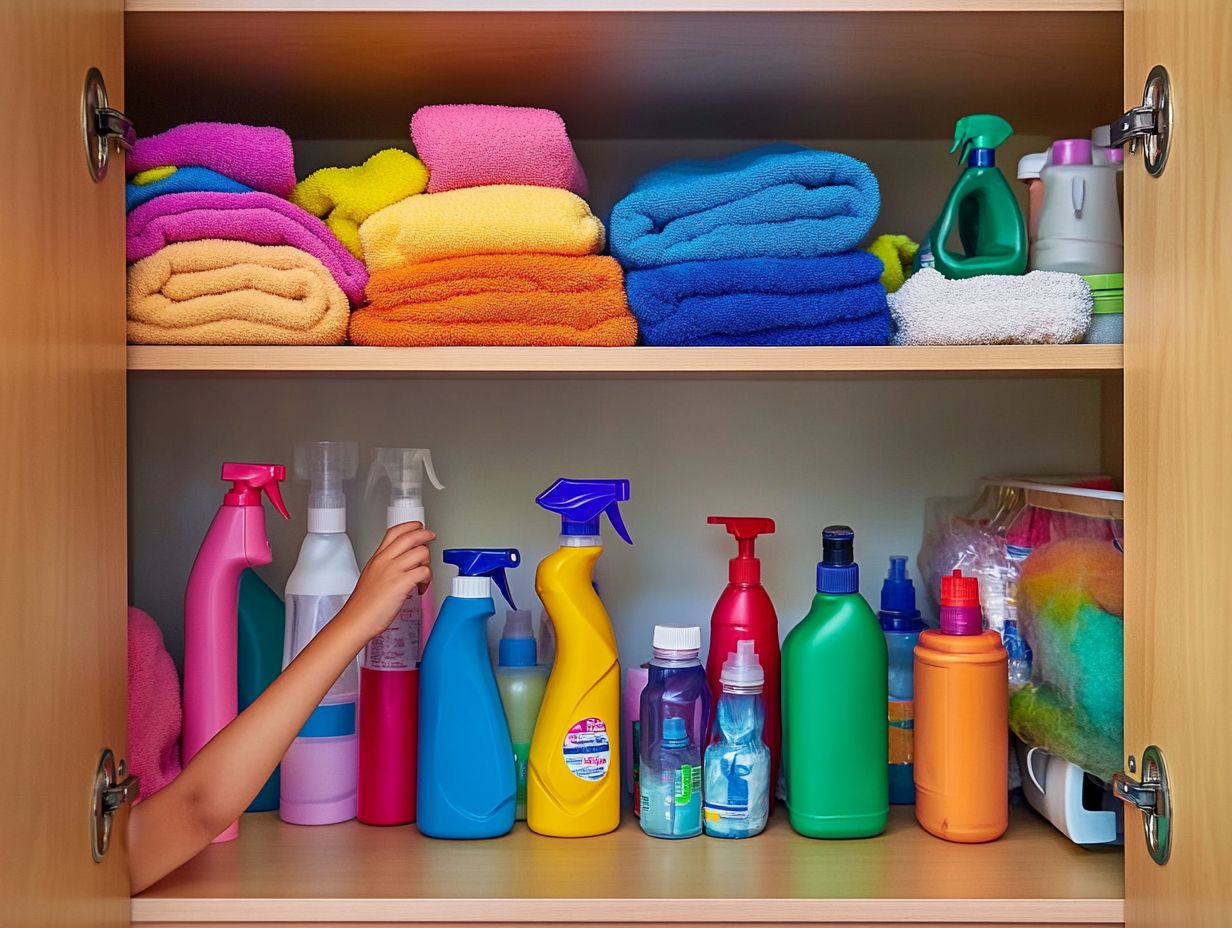
Organizing your cleaning supplies for easy access requires planning ahead and a thoughtful approach to storage that maximizes both space and usability. Use a cleaning caddy to streamline your access to everyday products. Using wall space, like hanging organizers, can significantly reduce clutter and elevate the overall organization in your cleaning areas.
Group your supplies by how often you use them. This will make cleaning quicker and easier. Implementing organizing tips from experts like Mary Cornetta of Sort and Sweet Inc can also be very helpful.
To further improve organization, think about investing in stackable bins or clear storage containers that allow you to see what s inside at a glance. Labeling these containers will help you quickly locate specific items.
Another clever trick is to repurpose an over-the-door shoe organizer; the pockets can neatly hold various cleaning supplies and tools. Dedicate a space for larger items like brooms and mops on a wall-mounted rack to free up floor space while keeping these essentials accessible yet out of the way.
With a dash of creativity and some practical strategies, you can effortlessly create a streamlined and efficient setup for your cleaning supplies. Don’t wait organize your cleaning supplies today for a more efficient cleaning routine!
What are the Alternatives to Traditional Cleaning Supplies?
Exploring alternatives to traditional cleaning supplies opens the door to discovering eco-friendly solutions and multi-purpose cleaners that are effective and gentler on the planet. Many households are shifting toward these alternative cleaning methods, using natural ingredients like vinegar and baking soda. These ingredients help reduce reliance on harsh chemicals commonly found in conventional cleaning products.
Incorporating essential oils, such as tea tree or lavender, elevates your cleaning routine while providing the benefits of their antimicrobial properties. Products featuring plant-based surfactants substances that help remove dirt are also gaining popularity. They provide powerful cleaning solutions without negatively impacting water systems and wildlife.
Embracing these alternatives shows a heightened awareness of how cleaning supplies affect both personal health and environmental well-being. Plus, DIY cleaning recipes can be customized to meet your specific needs. These options are economical and tailored, working well on various surfaces and dirt types. This approach makes home cleaning more sustainable and efficient, aligning with a conscious lifestyle. For professional advice, refer to experts in home organization and cleaning methods.
What are the Best Practices for Using Cleaning Supplies?
Adopting best practices for your cleaning supplies guarantees you ll get the best results while prioritizing safety and organization in your cleaning routine.
Implementing effective methods, such as conducting routine checks to verify that your products are within their expiration dates, helps prevent the use of ineffective solutions. It also avoids potentially hazardous reactions from expired cleaning chemicals.
Using safety equipment and following manufacturer instructions enhances the overall safety of your cleaning process. Consider using a removable tension rod under the sink to hang spray bottles and optimize storage space.
How to Properly Dilute Cleaning Products?
Properly diluting cleaning products is vital for ensuring both effectiveness and safety, significantly reducing the risks associated with concentrated chemicals. By following the manufacturer’s mixing instructions, you maintain the cleaning products’ power while minimizing potential safety concerns especially important in homes with children and pets.
Implementing effective organization and proper handling of diluted solutions creates a safer and more efficient cleaning environment.
Understanding the correct mixing instructions is essential; using a mixture that’s too concentrated can lead to hazardous situations like skin irritation or respiratory issues. For example, a typical household cleaner might need a dilution of one part cleaner to ten parts water for optimal results. Always check the product labels for specific instructions and consider using measuring tools to ensure precision. For workplace safety, refer to OSHA guidelines.
Having a designated spray bottle for each diluted solution streamlines your cleaning tasks and ensures that everyone in your household knows exactly what they’re using. This fosters an environment of safety and responsible cleaning practices, giving you the power to keep your space spotless and secure.
What are the Precautions to Take When Using Cleaning Supplies?
Taking precautions when using cleaning supplies is essential for ensuring your safety, especially if you have children and pets at home. Always wear safety equipment like gloves and masks when handling chemicals that can be dangerous. Implement storage solutions with child safety measures, such as child-proof locks, to prevent accidental access to dangerous cleaning products. This creates a safer cleaning environment for everyone. Use small bins to sort items. This makes managing your supplies easier.
Always read the labels! They provide important safety information and instructions for safe usage and first aid in case of exposure. Ventilate the cleaning area to help minimize fumes and safeguard your health. Keep cleaning solutions in their original containers so you can easily identify them and avoid mixing incompatible substances, which can lead to hazardous reactions.
Regularly review and update your safety protocols to foster a safety culture at home. This prioritizes the well-being of all household members. Incorporating child-proof locks and other safety concerns enhances child safety and helps prevent potential accidents.
How to Dispose of Unused or Expired Cleaning Supplies?
Disposing of unused or expired cleaning supplies properly is vital for environmental safety and preventing hazards. Many cleaning products contain hazardous chemicals that can be harmful if discarded improperly. Follow local disposal guidelines and regulations to ensure safe disposal. Use safety equipment when handling expired products to reduce your risk of exposure. Ensure proper ventilation when using these products to minimize the risk of toxic reactions.
Check the labels for specific disposal instructions. Some products may require special handling due to their chemical content. Community resources like hazardous waste collection events or designated drop-off centers offer excellent options for safe disposal. Additionally, use local waste management services, which typically have established protocols for collecting toxic cleaners. For convenience, use a utility cart to transport products to designated drop-off centers.
Explore eco-friendly alternatives for cleaning supplies. These options tend to be less harmful to both your health and the environment. By ensuring that you and your community follow these practices, you contribute to fostering a safer, cleaner environment for all. For example, using multi-purpose cleaners and natural cleaning methods can reduce the need for some harsh cleaners.
Frequently Asked Questions
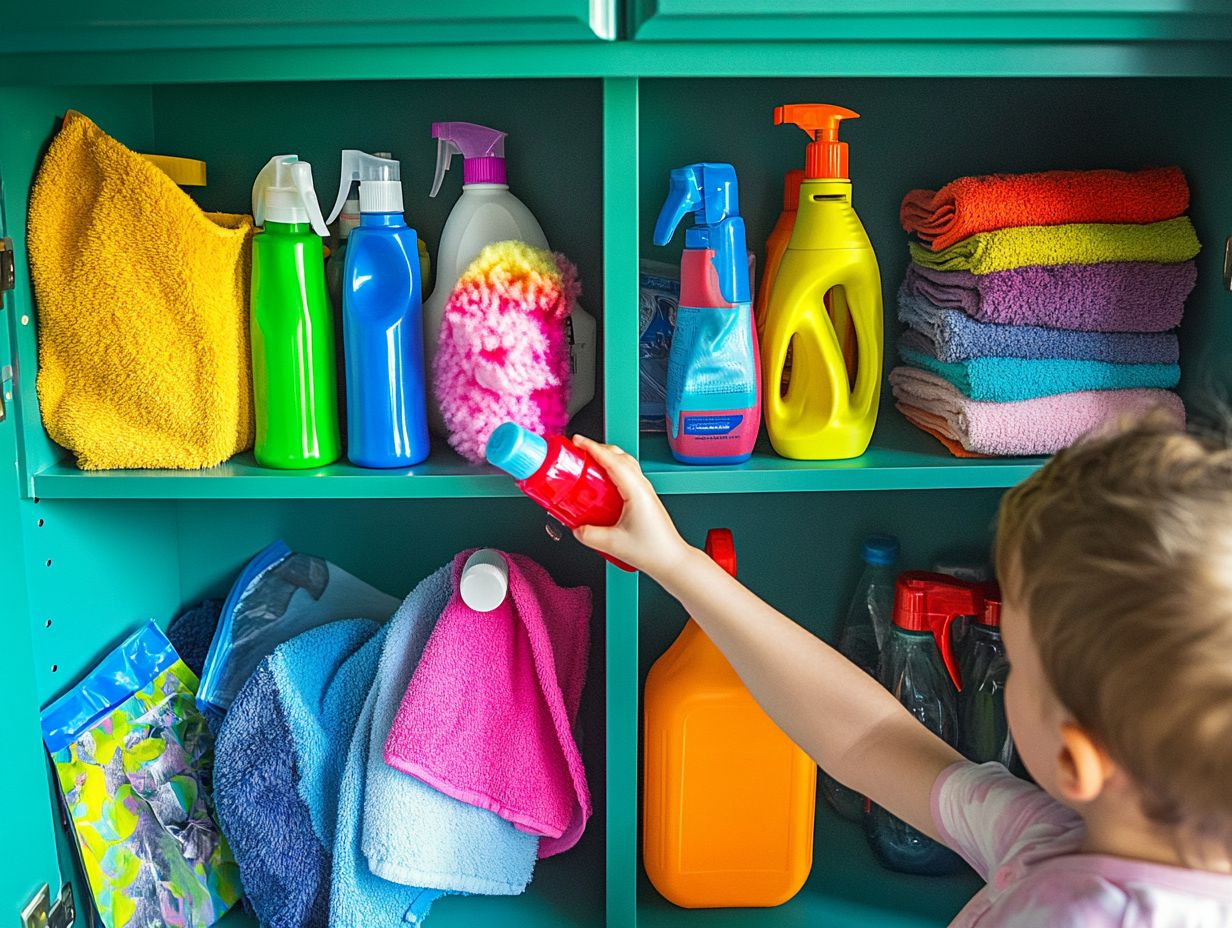
1. How can I keep my cleaning supplies safe and accessible at the same time?
Store cleaning supplies in a locked cabinet or closet that is out of reach of children and pets. This will prevent any accidents or ingestion of harmful chemicals. You can use hanging organizers and removable tension rods to maximize cabinet space while ensuring easy access.
Label your supplies and keep them organized by using clear containers and labeled bins.
2. What are some essential safety measures to follow when storing cleaning supplies?
Always keep cleaning supplies in their original containers. Never transfer them to different containers to avoid confusion and accidental mixing of chemicals. Be sure to read and follow the instructions and warning labels on the products to avoid potential hazards. Organizing cleaning supplies using a cleaning caddy a portable container for organizing supplies can provide easy access and help you manage cleaning activities more efficiently.
3. How often should I check and replace my cleaning supplies?
Tracking supplies can help ensure that expired items are replaced promptly.
It is important to regularly check the expiration dates on your cleaning supplies and replace them when they have expired.
Expired products may not be effective and can pose safety risks.
Periodically check for leaks or damage to the containers and replace them if necessary. Conducting routine checks ensures that items that can be dangerous if expired are identified and addressed promptly.
4. What are some safe alternatives to harsh chemicals for cleaning?
Opt for glass cleaners that use natural ingredients.
There are many eco-friendly and natural options for cleaning that are safe for both your family and the environment. Some examples include using vinegar and baking soda for cleaning surfaces and using lemon or essential oils for a fresh scent instead of artificial fragrances.
Explore effective natural cleaning options that suit your needs. Consider consulting with professional cleaning services for additional cleaning methods and organizing tips.
5. How can I make my cleaning supplies more accessible for people with disabilities?
Using nylon baskets and a bungee cord can provide flexible storage solutions.
If you or someone in your household has a disability that makes it difficult to access cleaning supplies, consider organizing them in a way that is easier to reach. This could mean using lower shelves or storage containers with handles for easier mobility.
You can also label the supplies in braille or with large print for those with vision impairments. Using a cleaning caddy with supplies on wheels can also make it easier to transport cleaning products around the house.
6. What should I do with old or unused cleaning supplies?
Consider storage ideas like a cleaning caddy for easy transport to disposal sites.
To safely dispose of old or unused cleaning supplies, donate any usable items. For others, check local guidelines before disposal.
Do not pour chemicals down the drain or throw them in the trash. For home organization, consider creating designated cleaning areas with separate bins for cleaning tools and products that need to be disposed of or replaced.
